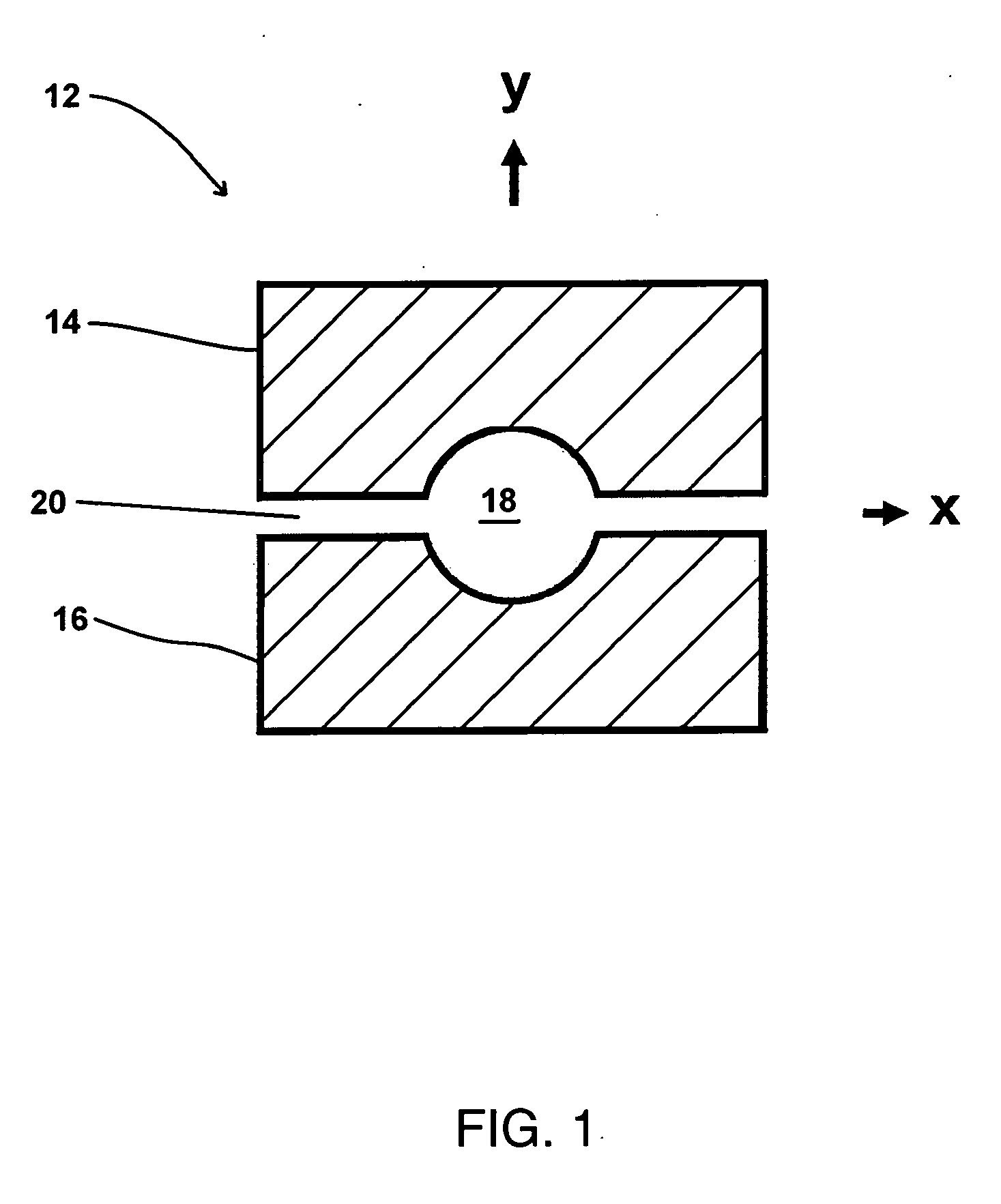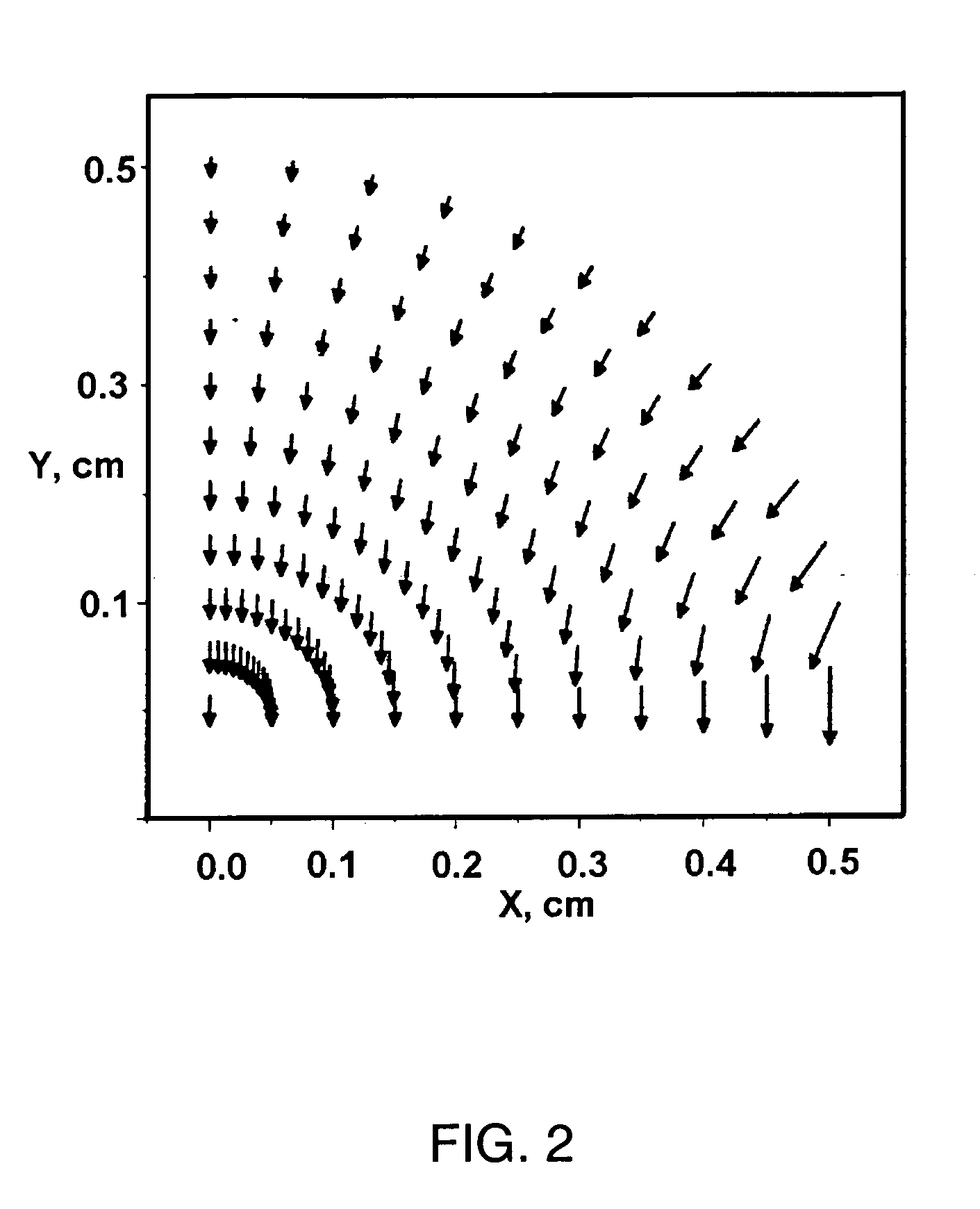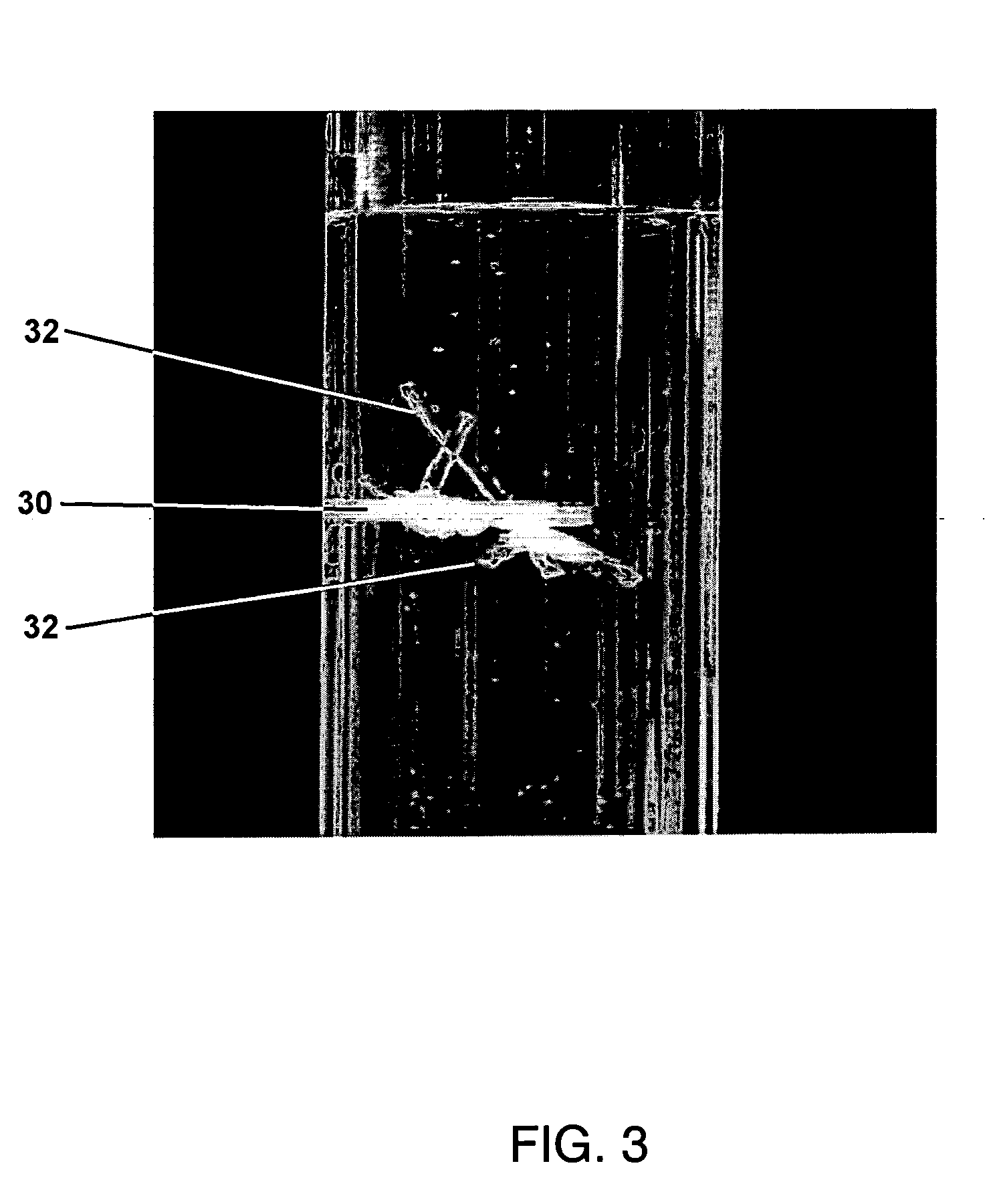Method for using a static electric field to induce crystallization and to control crystal form
a static electric field and crystallization technology, applied in the direction of crystal growth process, peptides, enzymology, etc., can solve the problems of insufficient exposure of aged solutions to fields of 400,000 v/m, molecules have trouble forming nuclei,
- Summary
- Abstract
- Description
- Claims
- Application Information
AI Technical Summary
Benefits of technology
Problems solved by technology
Method used
Image
Examples
Embodiment Construction
1. Introduction.
[0035] We have proposed a mechanism for NPLIN that involves the optical electric field induced alignment of solute molecules in a preexisting solute cluster, helping the cluster organize into a crystal. One issue with this hypothesis is that the calculated induced-dipole interaction energy in our NPLIN experiments ½ (Δα)E2=10−4 kT is orders of magnitude too small to account for the observed reduction in nucleation time, where E is the oscillating optical electric field (6×107 V / m), Δα is the solute molecule polarizability anisotropy, k is the Boltzmann constant and T is the Kelvin temperature. Cooperative effects among many solute molecules in a large solute cluster might account for this discrepancy.
[0036] There is theoretical evidence that a strong DC electric field can induce crystallization. Molecular dynamics simulations by Svishchev et al. showed that supercooled water can be induced to crystallize by a DC field of magnitude 5×109 V / m. Svishchev, I. M. et al...
PUM
| Property | Measurement | Unit |
|---|---|---|
| Temperature | aaaaa | aaaaa |
| Time | aaaaa | aaaaa |
| Time | aaaaa | aaaaa |
Abstract
Description
Claims
Application Information
 Login to View More
Login to View More - R&D
- Intellectual Property
- Life Sciences
- Materials
- Tech Scout
- Unparalleled Data Quality
- Higher Quality Content
- 60% Fewer Hallucinations
Browse by: Latest US Patents, China's latest patents, Technical Efficacy Thesaurus, Application Domain, Technology Topic, Popular Technical Reports.
© 2025 PatSnap. All rights reserved.Legal|Privacy policy|Modern Slavery Act Transparency Statement|Sitemap|About US| Contact US: help@patsnap.com



